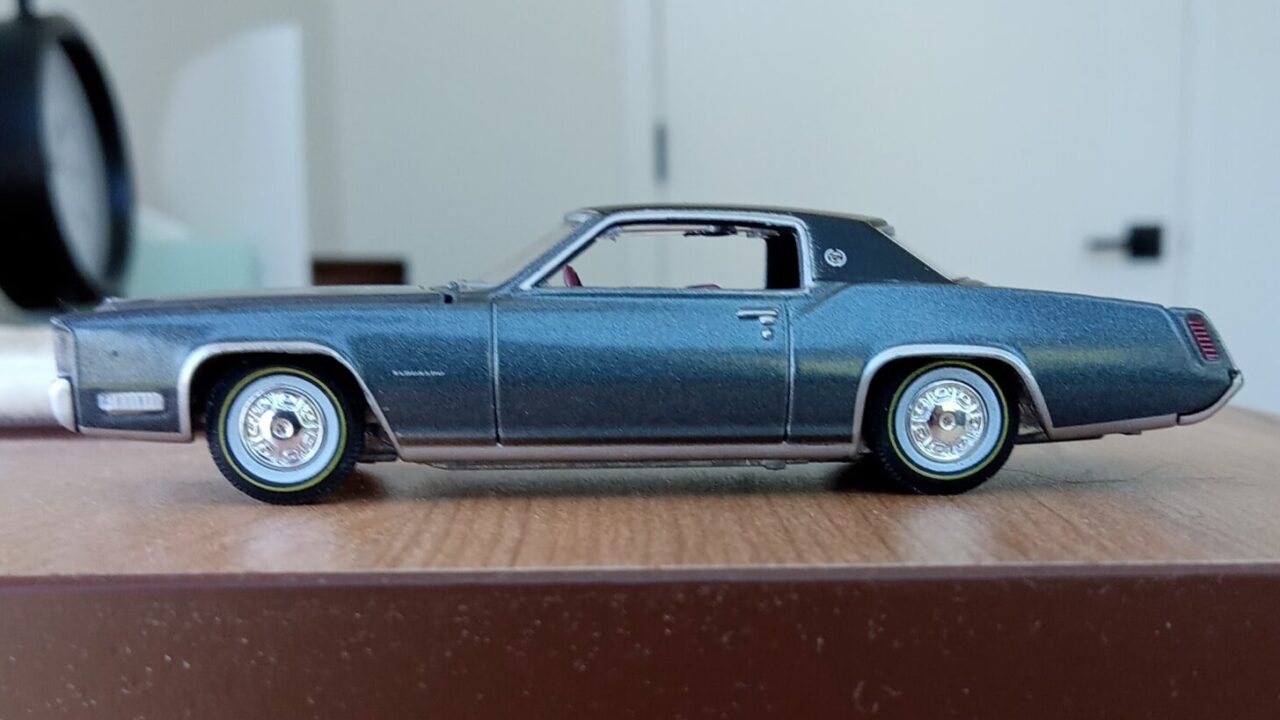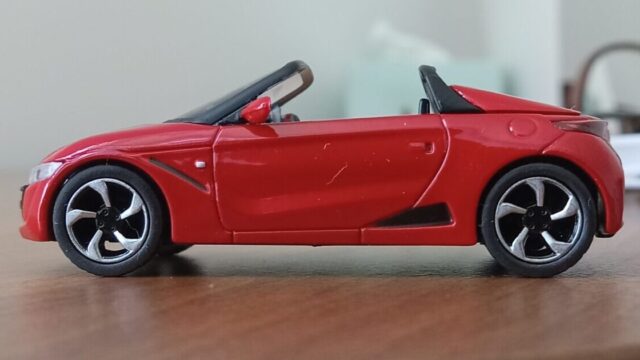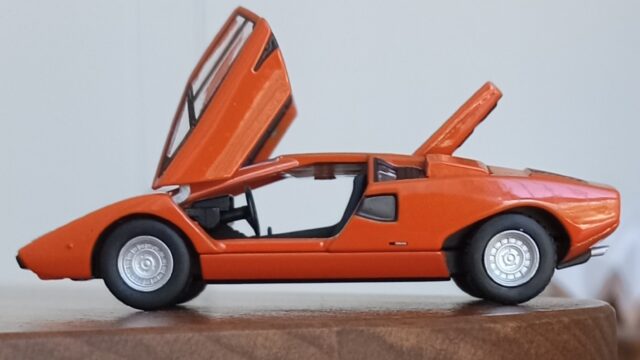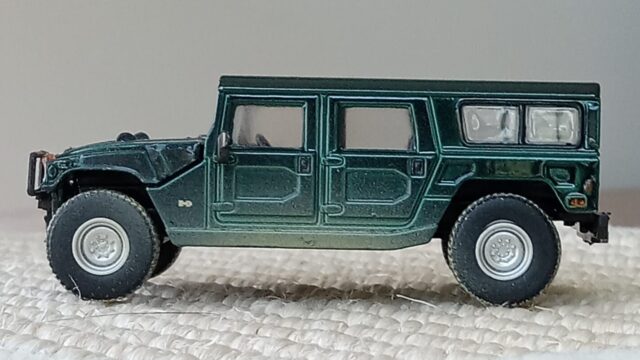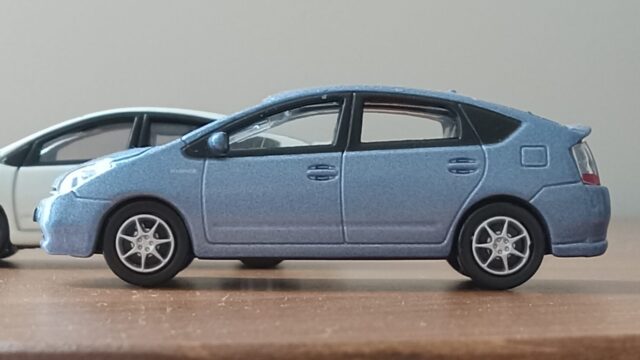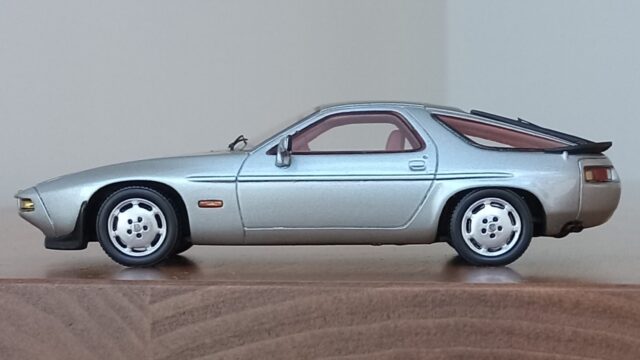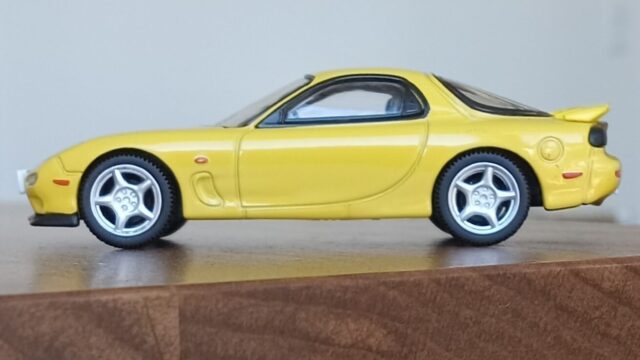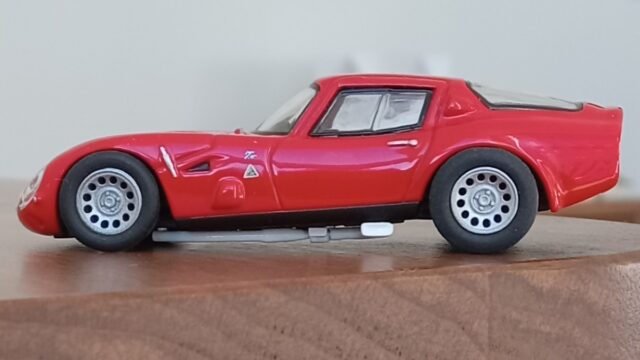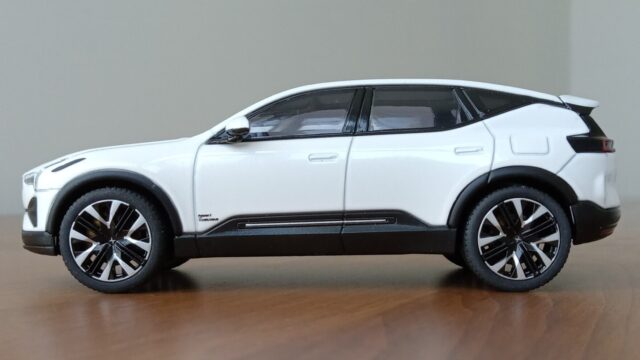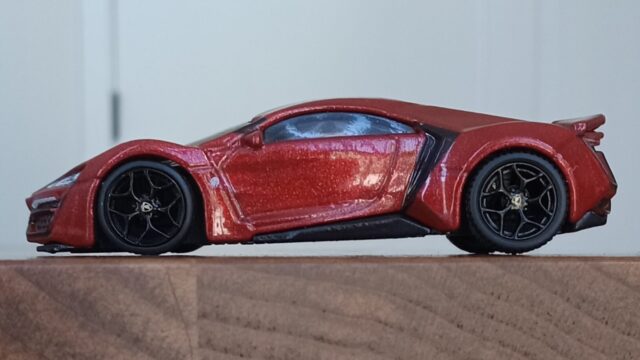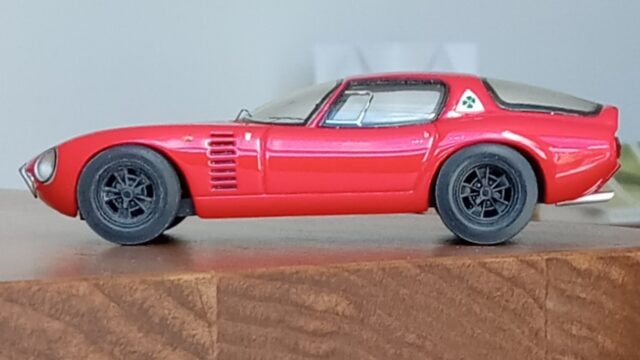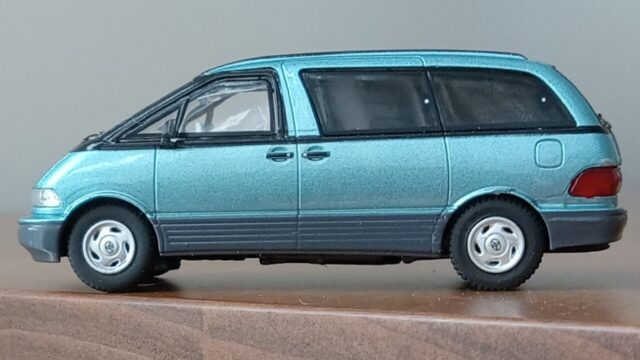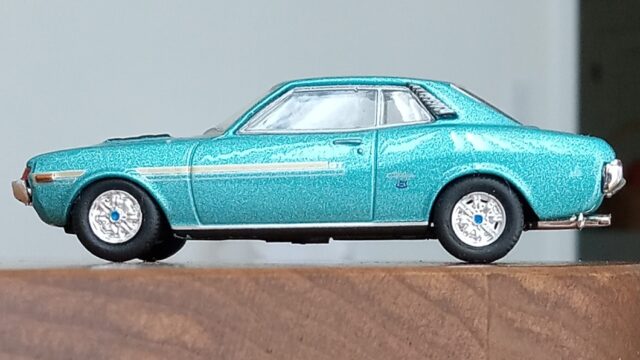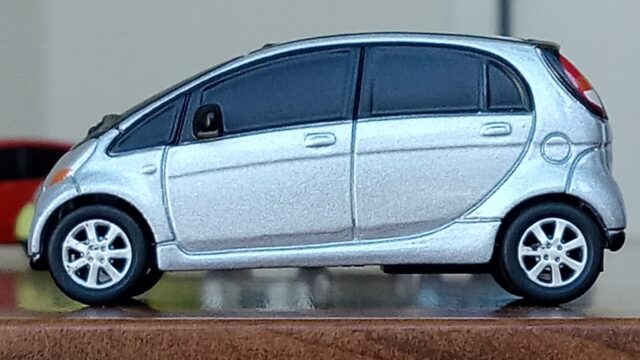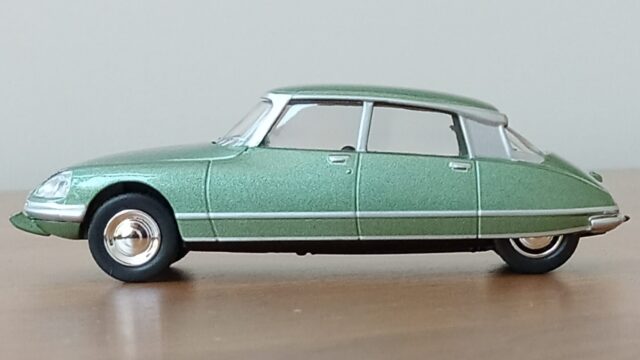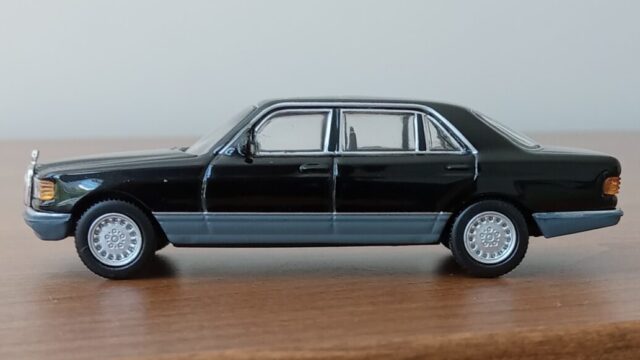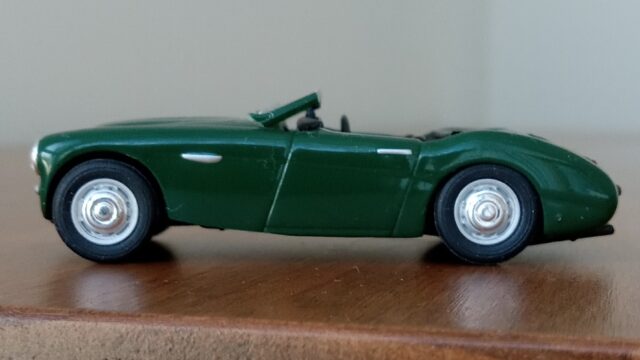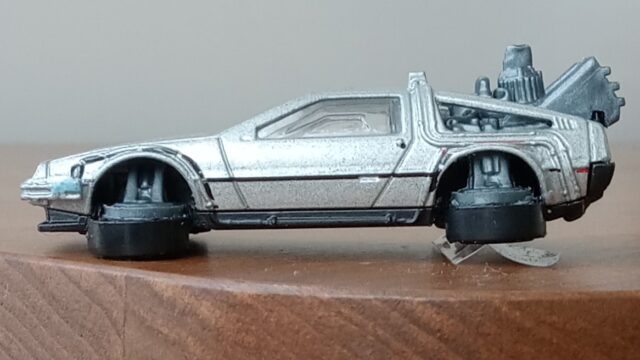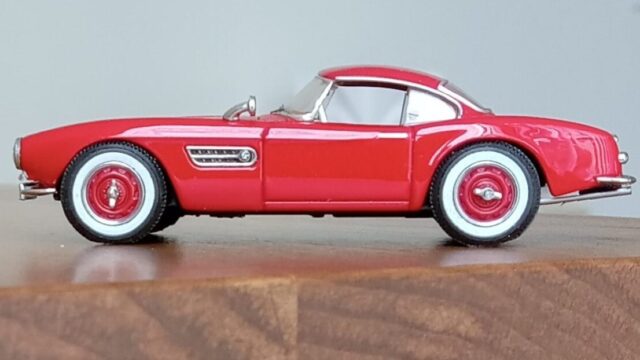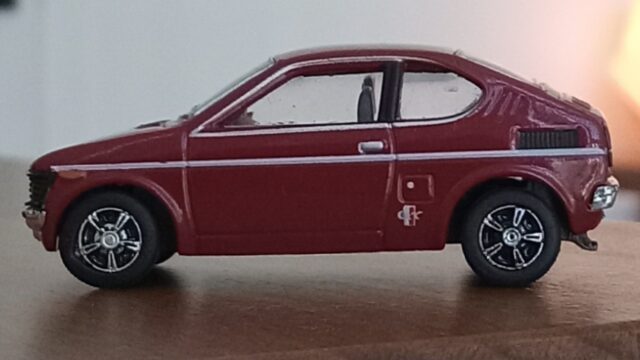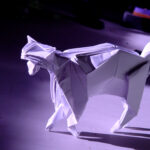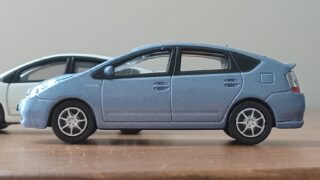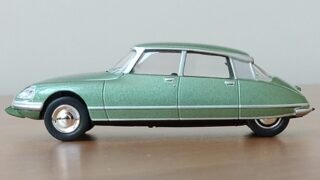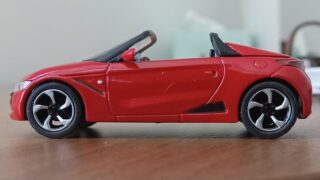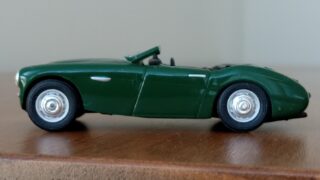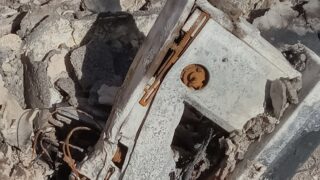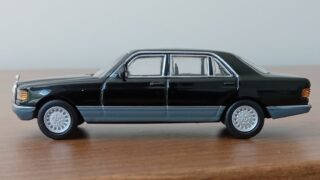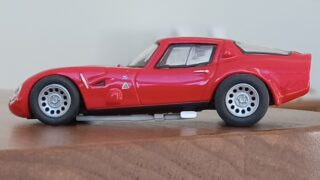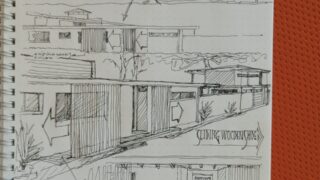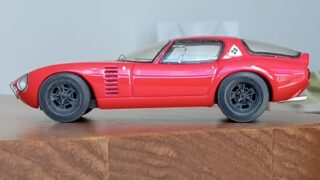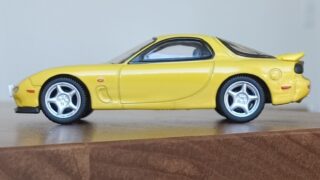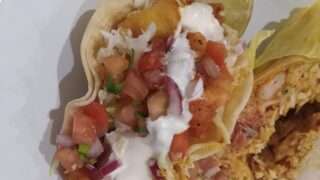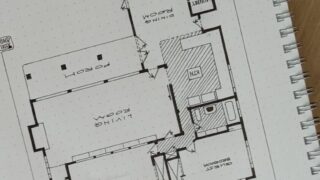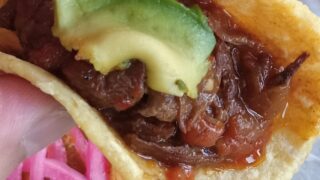第7位:キャデラック・エルドラド, 1967年型
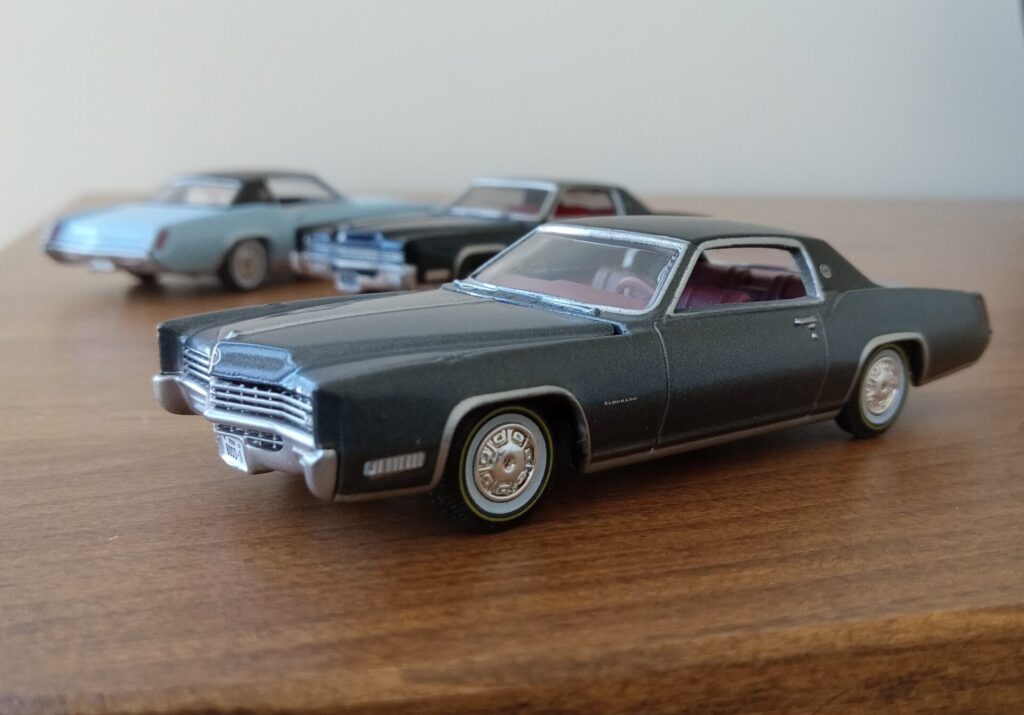
私が67年型エルドラドと聞いて、まず思い浮かぶのは、
『知性あふれる、セックスアピール:キャサリン・ヘップバーン』
というイメージです。
(彼女が40年代のスクリューボール・コメディーの中で演じた、知的な第一印象からは想像がつかない、押しの強い、野性味あふれるキャラクターがミスマッチ感も相まって、なんとも魅惑的で神秘的なバランスを保っていました。)
67年型エルドラドにはそんな、二面性をすごく感じます。
ちなみに、
デザインベスト10の結果は以下のようになっています。
第10位:BMW 507, 1956 ————————ーーー(シルバー+同色ハードトップ)
第9位:AMゼネラル ハマーH1, 1992 ——ー(軍用ウッドランド・カモフラージュ)
第8位:MB 560 SEL, W126型, 1979 ————ーー(黒とブルーグレーの2トーン)
第7位:キャデラック・エルドラド,1967 (メタリック・ブルーに黒のレザートップ)
第6位:トヨタ プリウス, 2003 (2代目)————————–(シーサイド・パール)
第5位:ホンダ S660, 2015 ————————————— (スター・ホワイトパール)
第4位:ポルシェ 928,1978 ————-(ライトブルー・メタに格子パターンの内装)
第3位:シトロエン DS23 Pallas, 1973 ————————(シャンペーン・ゴールド)
第2位:ランボルギーニ・カウンタック LP400, 1974 ——————ーー (オレンジ)
第1位:オースチン・ヒーレー 100/4 (BN/1), 1953 –(アイボリーと濃紺の2トン)
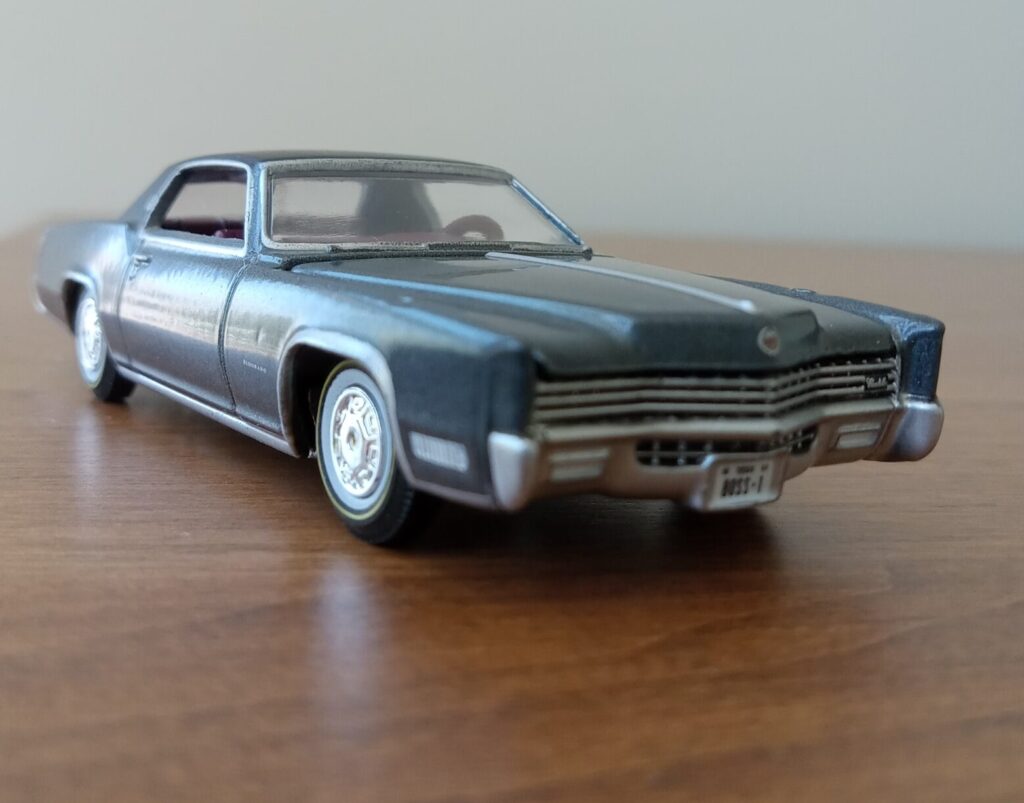 (AUTO WORLD 1/64 1967 Cadillac El Dorado、 Ice Blue w/ Black Leather Roof)
(AUTO WORLD 1/64 1967 Cadillac El Dorado、 Ice Blue w/ Black Leather Roof)
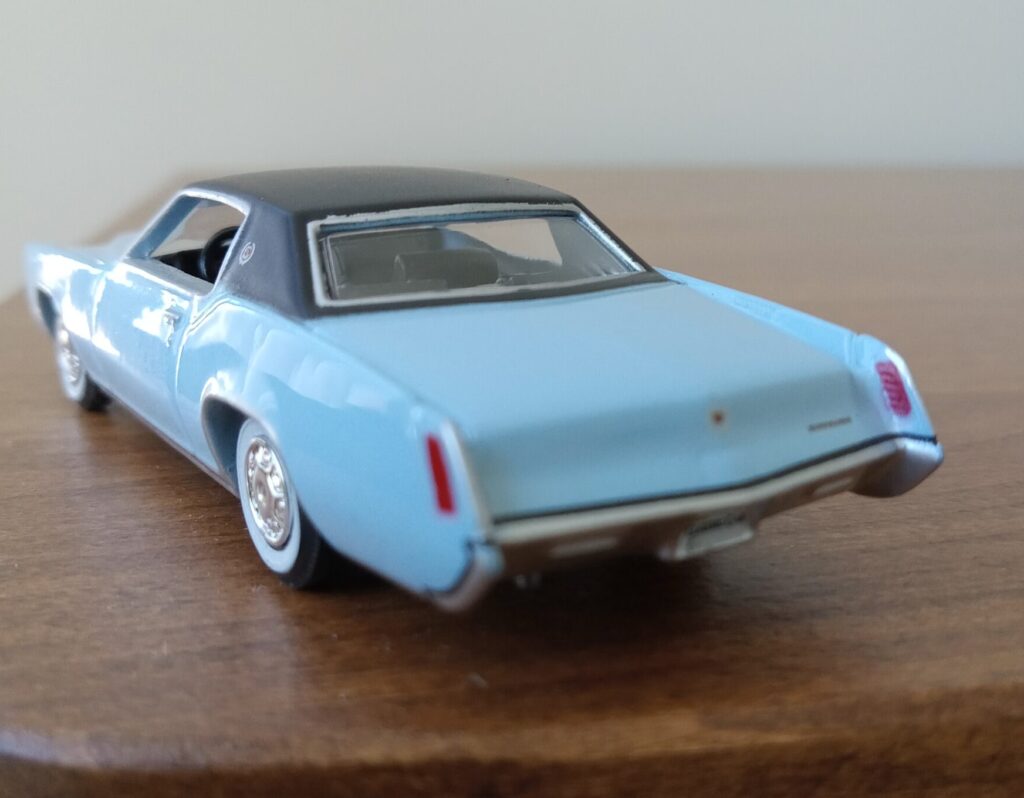
授賞理由とデザイン解説:洗練と野生の同居
戦前から存在したキャデラックの最高級2ドア車は、その理想郷(エルドラド)の名前にピッタリの、億万長者やハリウッドの映画スターが自分の邸宅と映画スタジオを往復するときに乗り回した成功のシンボル的存在でした。
そんなエルドラドが本当の意味での極上のパーソナル・クーペとして生まれ変わったのがこの1967年型です。前席の足元に余裕ができるなどのアドバンデージのあるFF駆動方式を導入することで、それまでのセダンと共通だったFRシャーシと決別して、より高いレベルの特別感の演出に成功しました。
エルドラドシリーズは、(既に入門者レベル(ポニーカー)ではフォード・マスタングやマーキュリー・クーガーなど)成功しつつあったパーソナルクーペブームの流れに乗る形で高級車部門で大成功をおさめ、その後の大型クーペ(ハードトップ?)のイメージを確立するとともに、ビル・ミッチェル x チャックジョーダン率いる黄金期GMデザインスタジオに数々の名声をもたらす起爆剤的存在となりました。
(同時期のGM製のFF高級クーペにはシャーシを共用した、ビュイク・リビエラとオールズモービル・トロネードがあり、どちらも秀逸なデザインで有名です。)
GMデザイン黄金期の傑作のひとつ
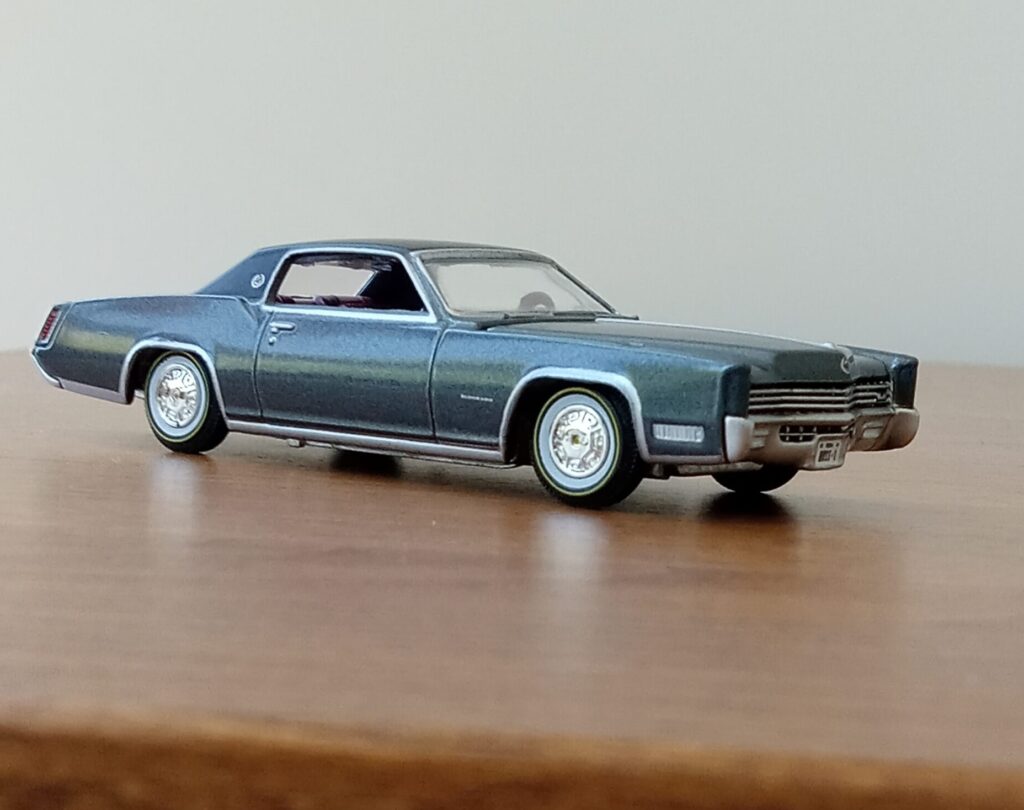
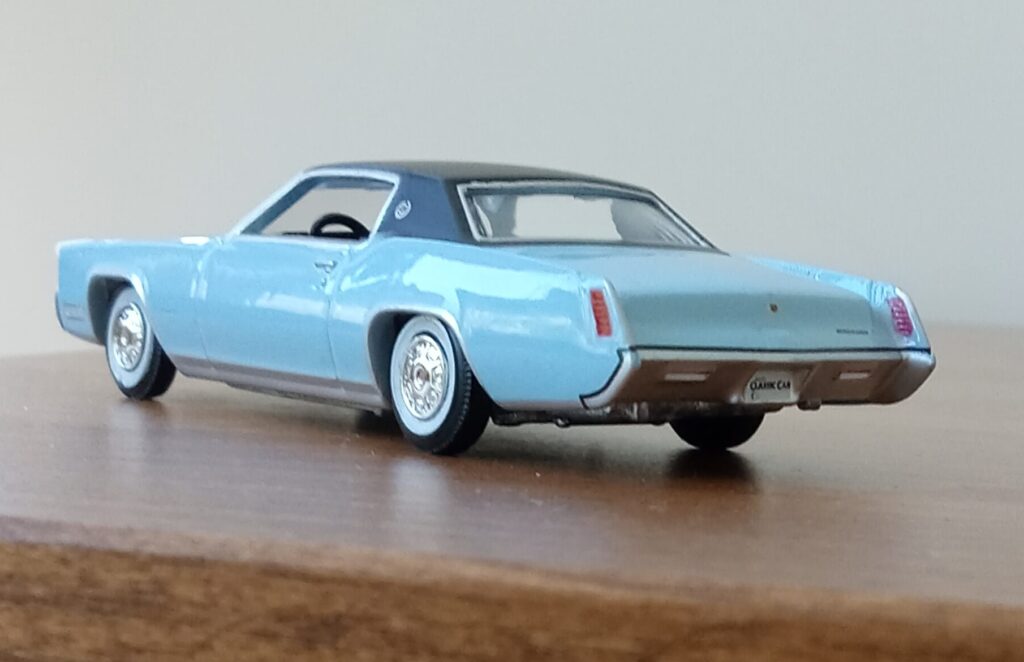
1950年代までのテールフィンに象徴される派手で装飾過剰なデザインに別れを告げる形で現れた60年代のアメリカ車のデザインですが、60年代前半はミニマリズムと洗練を強調しすぎた感があり、少しおとなしすぎたきらいがありました。そんな中フォードマスタングが口火を切る形で、アメリカ・ネオ・クラッシック・デザインと呼べそうなちょうどいい懐古調の波が始まりました。
1967年にはマスタングに続けとばかりにマーキュリー・クーガーが世に出て、これも大成功、そんな中、満を持して登場したのが『われらが・エルドラド』です。
GMデザインからのこの波(トレンド)への回答は、ナイフブレード・フェンダーと量感あふれる上向き面ボディーサイドの融合です。(かなり、わかりにくいですがこの主題部分はまた後程説明させていただきます。)
この時期にGMデザインスタジオは数々の実験的な生産車を世に出し、のちのデザイン界を牽引する助走的な活動を始めていました。具体的には66年型のオールズモビル・トロネードや同じく66年型ビュイック・リビエラなどの高級クーペにかなり前衛的なボディーサイドの面断面やフロント、リア・マスクなどを採用し、市場の反応を見極めていました。
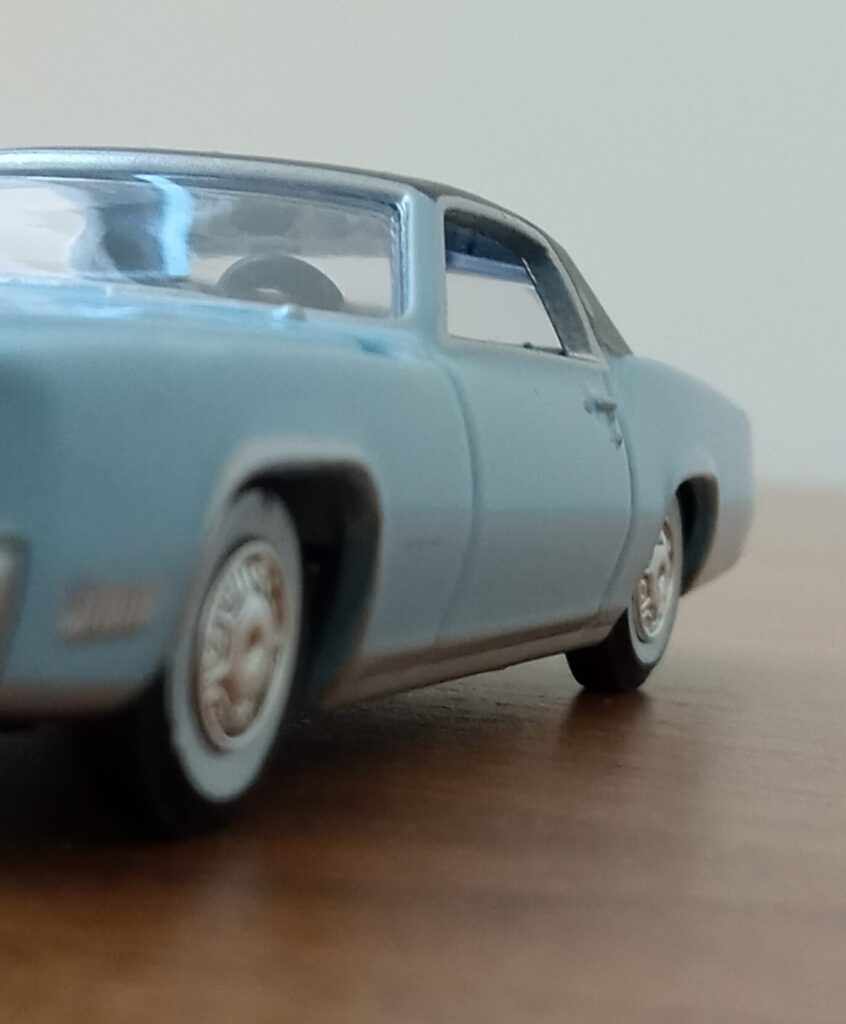
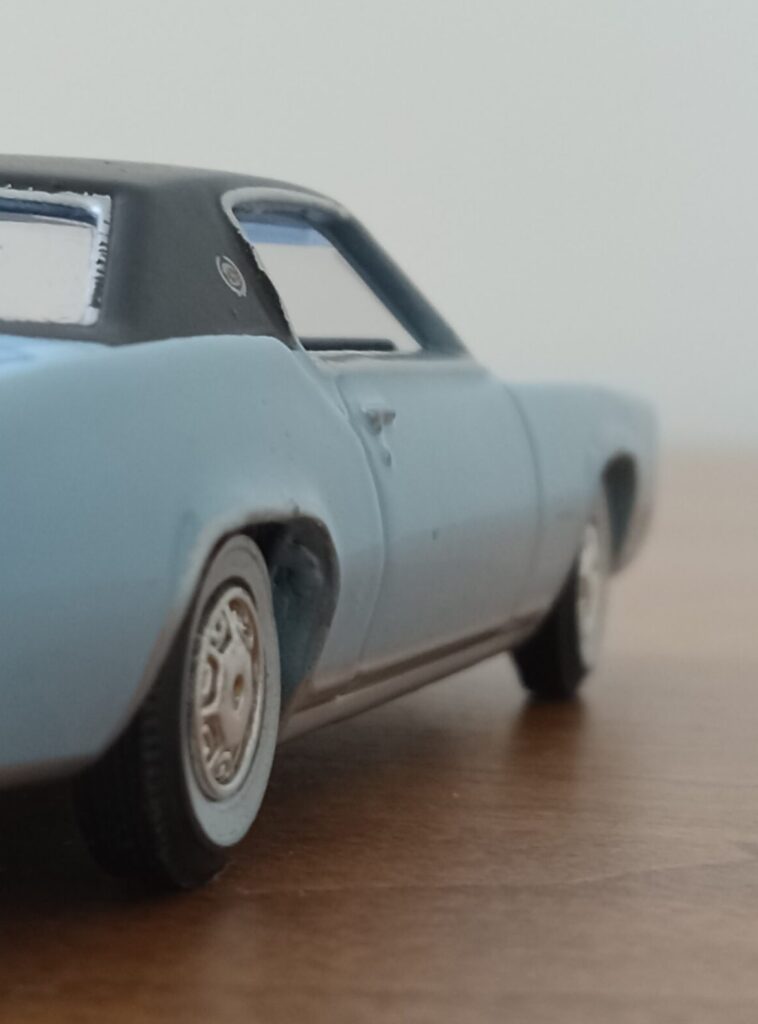
以下に、
数多いエルドラドの特筆すべきデザイン要素をならべてみます。
*ナイフブレード・フェンダー+トロネードのボディーサイド断面
*FF駆動を感じさせない、完璧なクーペ・プロポーション(サイドビュー)
*センターのクリーズ・ライン+ナイフブレードフェンダー=GMデザインのシンボル完成(クリーズ・ラインはリアウインドウにまで及びます)
*フロントのコンシールド・ライトと縦目の薄型テールライトにより装飾を抑える—->ボディーラインをいっそう強調
このような創造性豊かなアイデアとその実現により、あらゆる角度からの鑑賞に堪えうるだけでなく、ほぼすべてがベストビューと言っていいほどの大胆かつスキがない、もっともGMらしいデザイン(走る立体彫刻)が完成しました!!
ネオクラッシック・デザインが一般化した後の, 1970年代の(フォードサンダーバードやリンカンコンチネンタル・マーク4などに見られる、)ナイフブレード+『コの字型』ボディー断面ではなく、ナイフブレード+『くの字』断面を採用したことにより、(ふわふわとした腰高感が強調せれることなく、)移り行く光を大きな面でとらえて、優雅にどっしりとした安定感と方向性が演出されています。
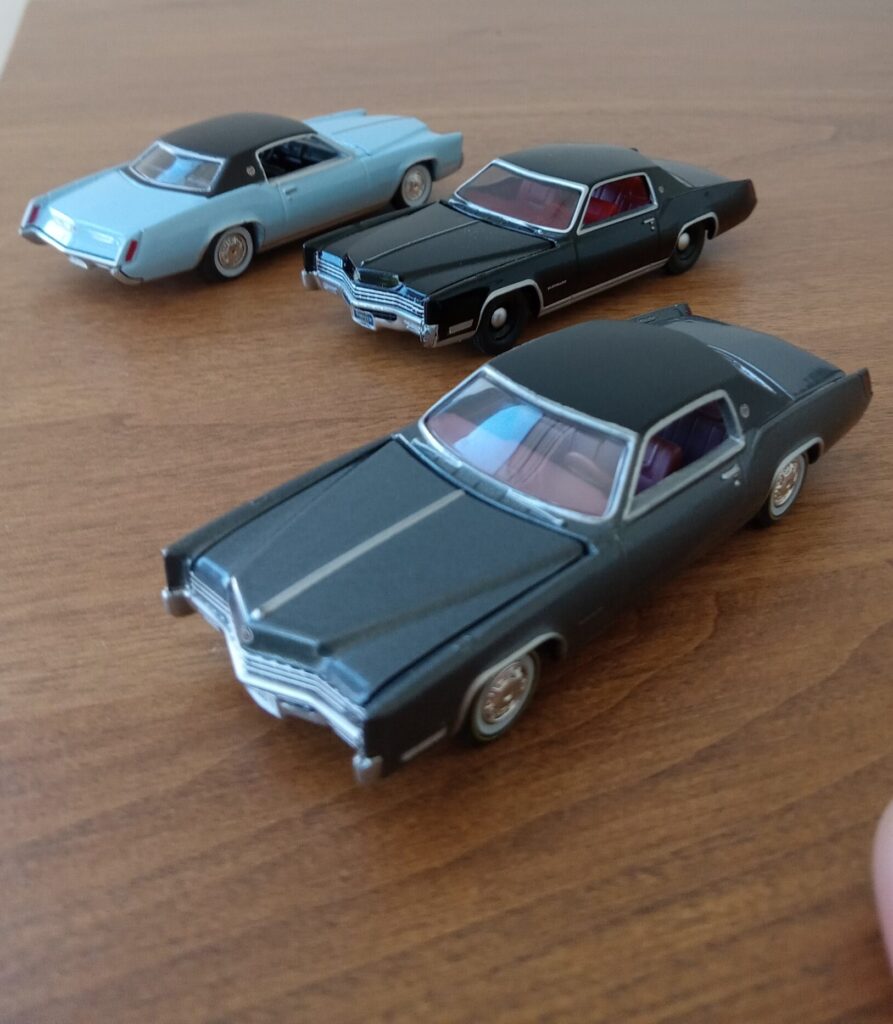
私の中での67年型エルドラド
私が初めて実車を目撃したのは、25年ほど前、バーバンクにあるカウンセラーの事務所近くの駐車場に止めてあった、朽ち果てたメタリックグリーンのエルドラドでした。
やはりここでも、
BMW507の時のように、少しがっかりした記憶があります。
* ぼろぼろに剥げた塗装はともかく、
*サイズがこんなに小さかったの?
*でもパキパキしていて、やっぱりカッコイイ!
*リアフェンダーは本物のナイフのようにシャープで、
触ってみると、手が切れそう。
といった感じでした。
塗装が剥げていたうえ艶もなく、さらに濃い色だったのもあり、予想していたほどの巨大感は味わえませんでした。しかしながらナイフのように切り立ったリアフェンダー上面はすさまじいオーラを発し、リアウィンドウのセンターラインにもクリーズ(折れ線)があるのをこの時初めて気付き、感動しました。
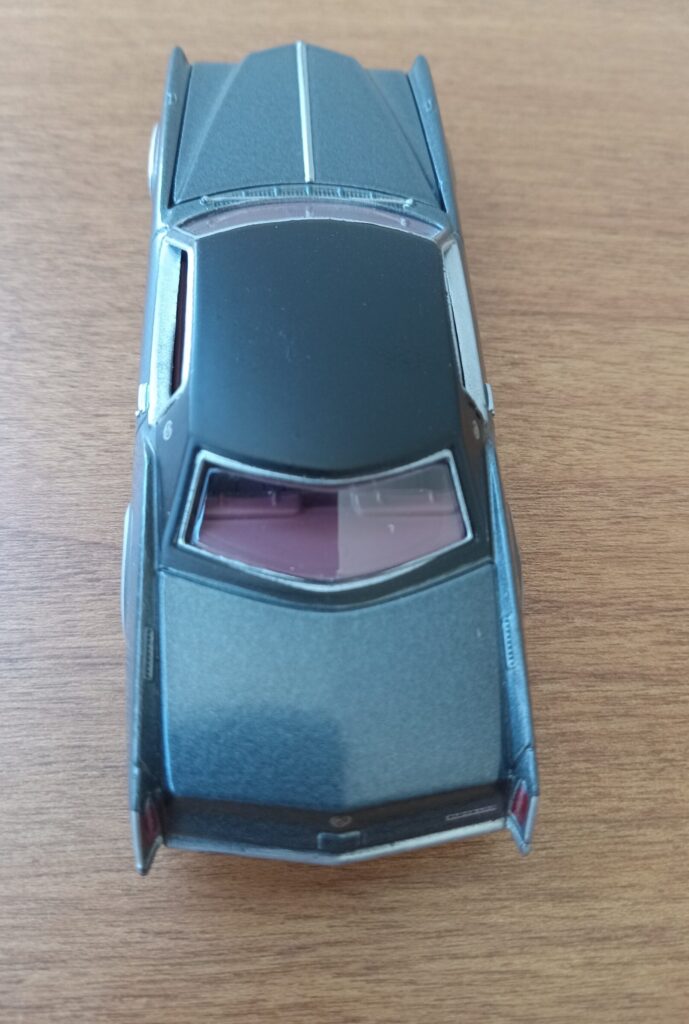
その後の実車、模型や雑誌、書籍、ウエブサイトなどの資料を観察・考察することで以下の魅力を発見するに至りました。
1.アニマル・フェンダーの知的洗練
1950年代に大人気を博したスポーツカーの前後フェンダー上のふくらみですが、ヨーロッパでは角型、くさび形の車型に道を譲る形で廃れていきましたが、なぜかアメリカでは前後フェンダー上にナイフブレードのように形を変え、その後何十年にもわたり存在続けました。
はじめはポニーカーやマッスルカー、その後(車幅の強調にピッタリなためか、)大型セダンなどにも、(まるでアメリカネオクラッシック造形のシンボルのように、)このフェンダー上のナイフ・クリーズは存在し続けました。
気づいた点:
50年代のヨーロッパ製のスポーツカーのフェンダー
—->ナイフブレード・フェンダーとしてアメリカで復活
アメリカ消費者が合理主義的な角形ウエッジシェイプの車を受け入れなかった事実は、
ちょうど住宅建築の世界で
モダンデザインの物足りなさに反抗する形で、ランチスタイルやスパニッシュ・リバイバルなどの装飾的なスタイルにこだわっていたのと、よく似ていると感じました。(そういえば、70年代のアメリカ車の内装はバロック調装飾で飾られた家具のようでしたね、、、)
2、あらゆる手を尽くして、伸びやかな(建築で言えばプレーリースタイルのような)美しさを追求しています。
『長く、広く、低く』
をモットーにタイヤのサイズや車軸の位置やトレッド幅などを総合的にパッケージングすることで、えも言われない知的な美しさを獲得しています。

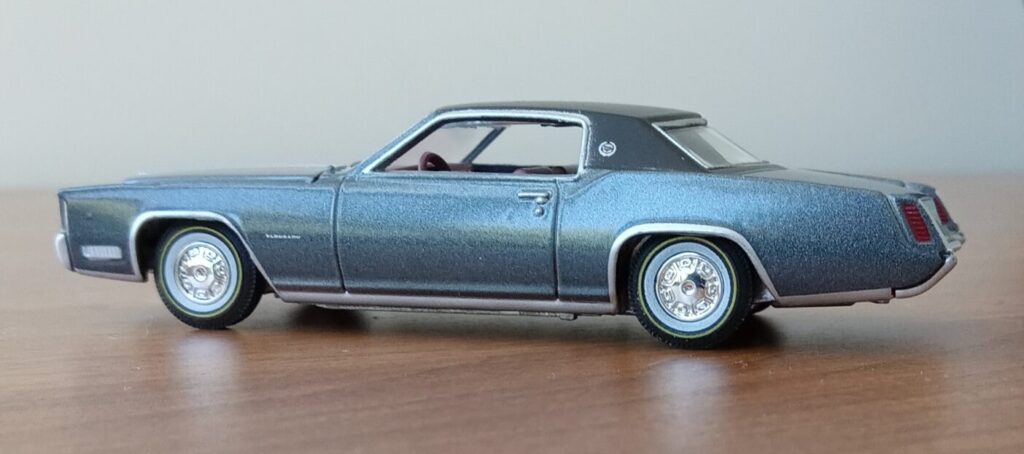
3.美しさは、細部に宿る
この型のエルドラドには、自動車史上、最も細長いリアクオーターウィンドウが装備されてました。しかも技術者の努力により異形のヒンジシステムを介して前後に開閉可能だったそうです!!
どうせ開閉式にするのだったらもう少しサイズを大きくしてもよかったのに、
『いや、デザイン上このほうが美しいので、この大きさでお願いします」
とか言ったのでしょうか?(笑)

4.プレス技術者泣かせの、リア・クオーター・フェンダー
時に、優秀な技術者の力添えなしに、素晴らしいデザインは生まれません。実際に触ってみたのですが、本当に指が切れそうでした!!
何度も試行錯誤の上、新しいプレス機を開発して実現したそうです。
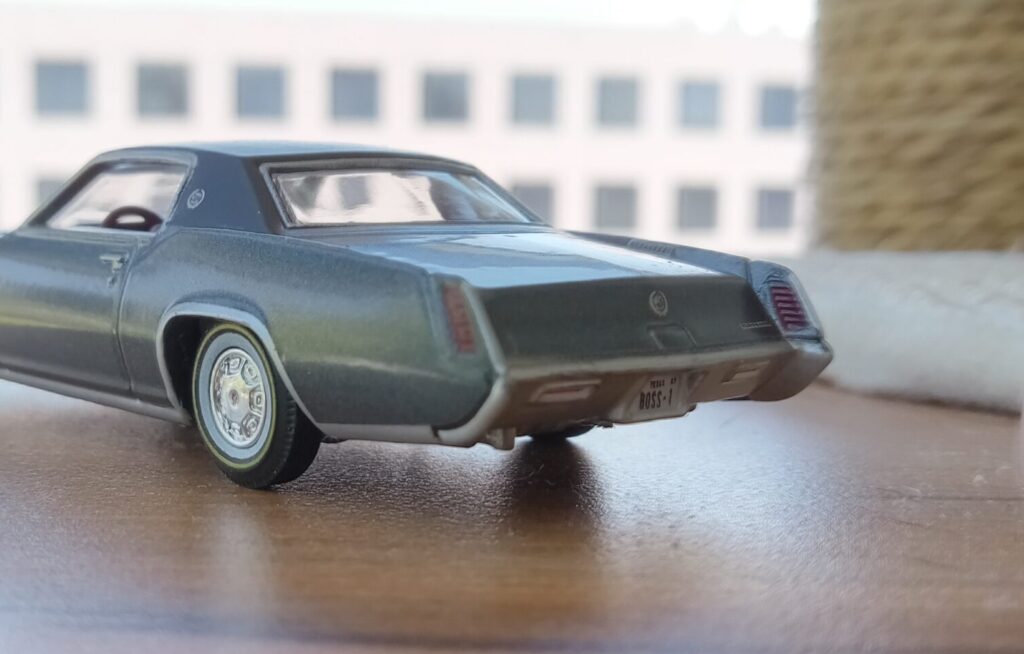
5.充実感あふれるプランビュー(上から見たところ)
このあたり、アメ車デザインの真骨頂です。
有り余る国土を有するため、最大全幅に制約なし。
のびのびとしたデザイナーの理想を追求した
上方からの眺めです。
具体的には、ナイフブレード部の前端からリアフェンダーのかけて大きくスイープしたラインが予想以上のボリュームを有するドア横の頂点部の存在を示唆します。
ーーーーーー>この車が近づいてくるとき、このボリューム感あふれるドア横の上を向いた大きな面が映し出す『動くリフレクション』は本当に美しいです。
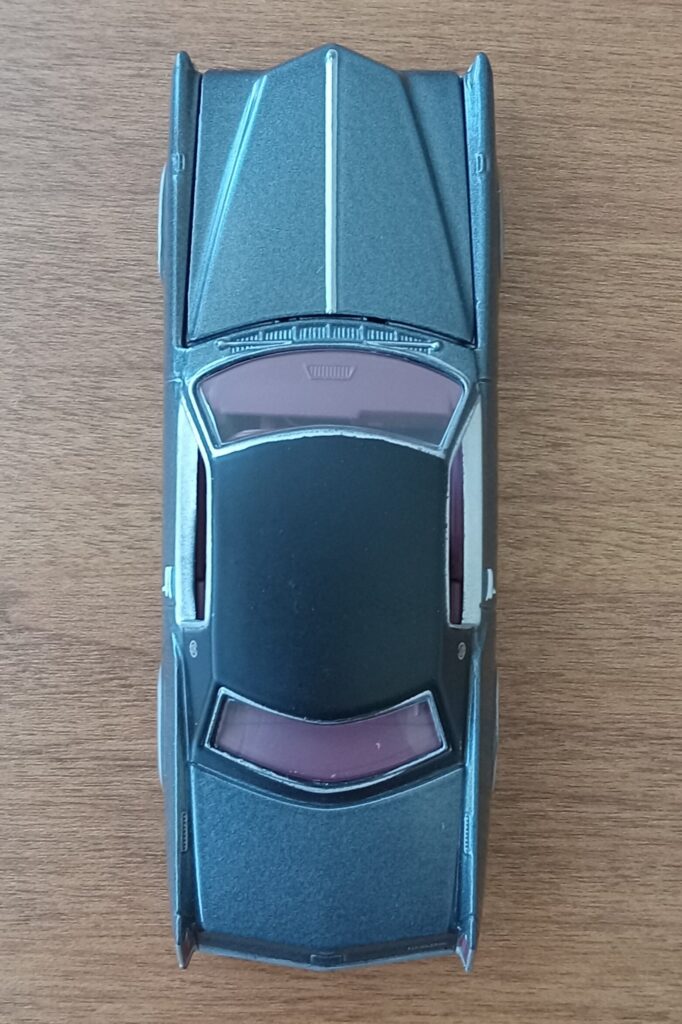
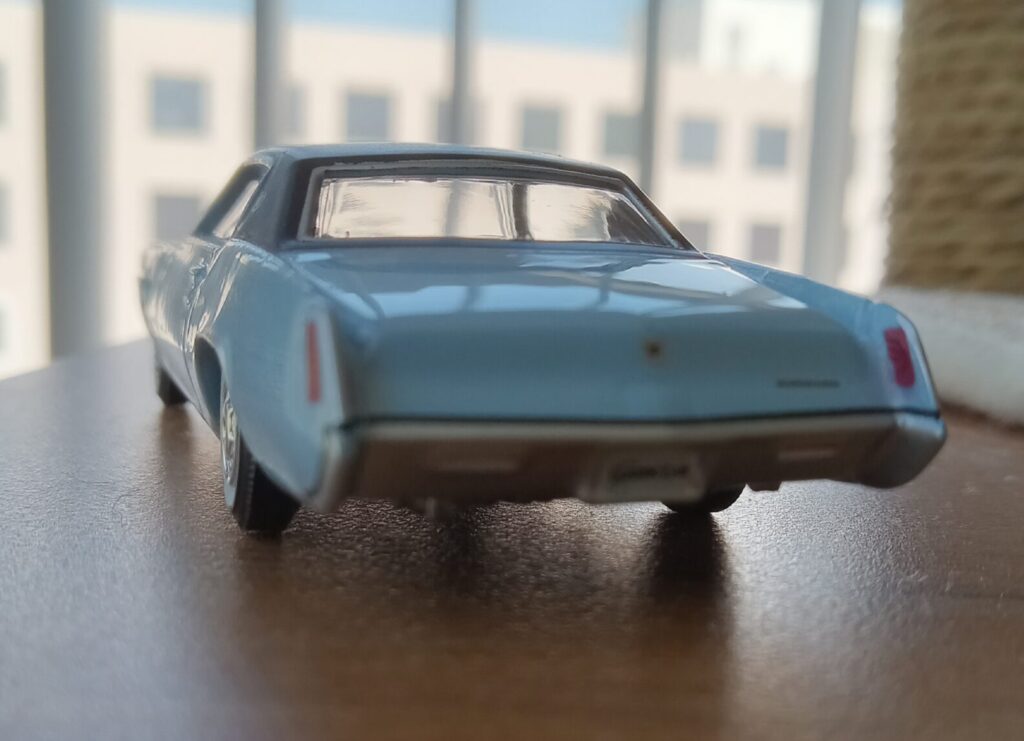
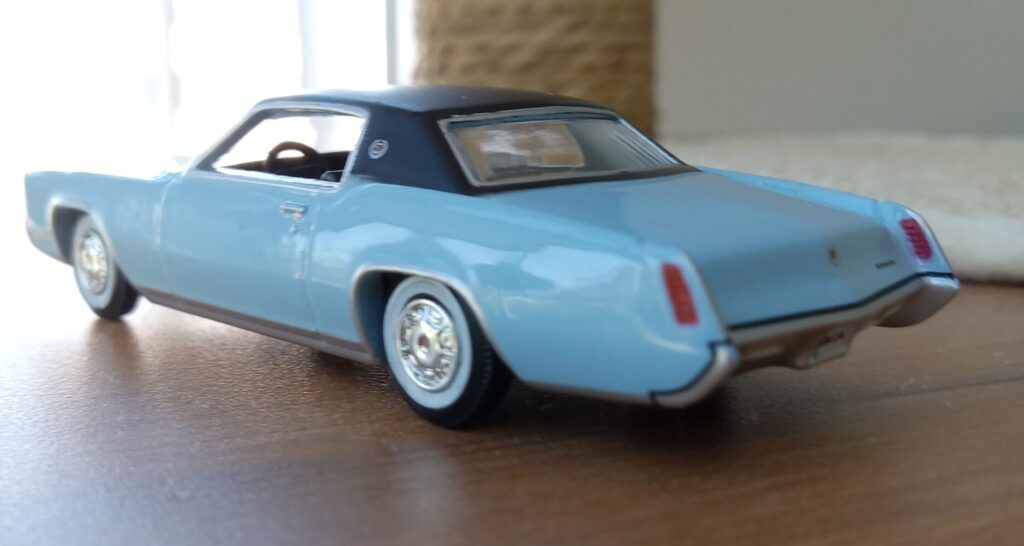
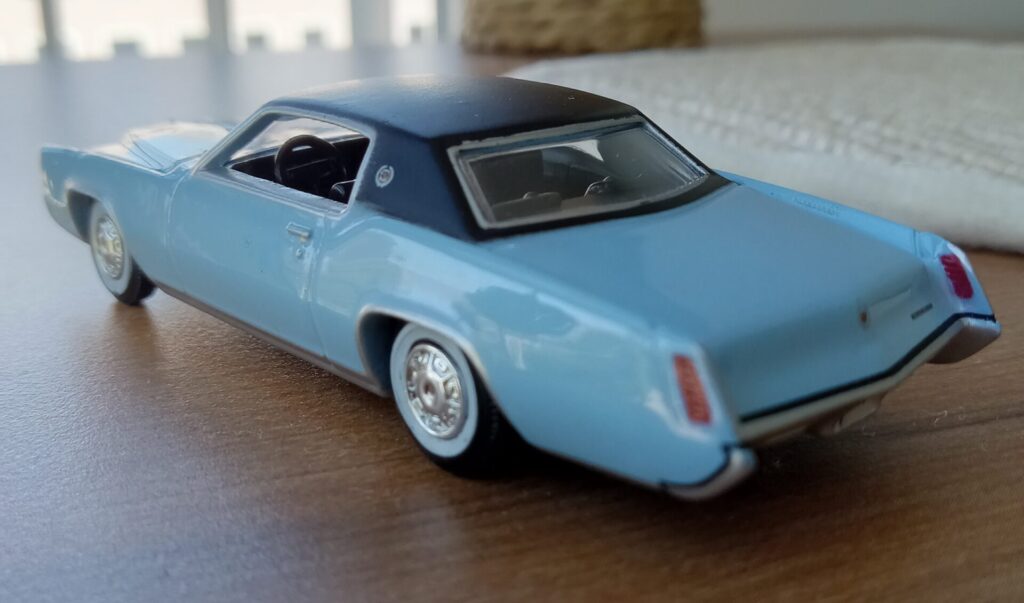
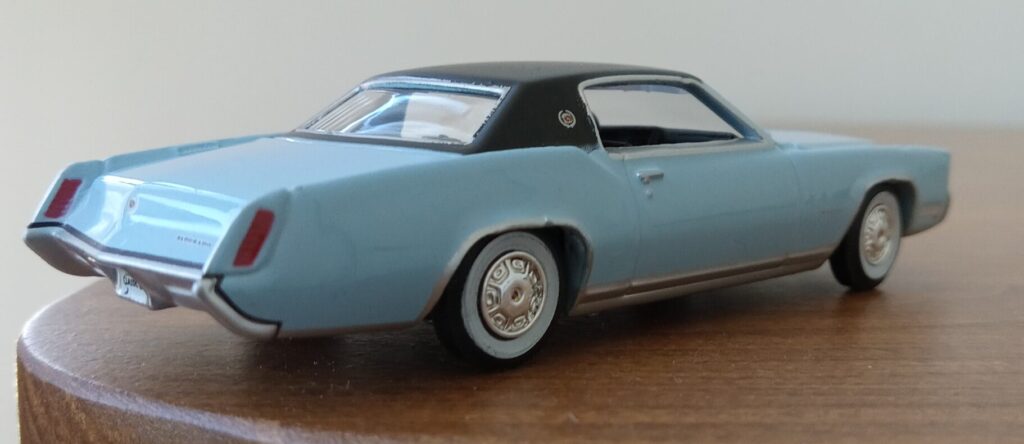
まとめ:キャサリン・ヘップバーンどこ行った?
心配いりません、最後に『キメ』ますから、、、、(笑)
まとめてみますと、
『パキッ』とした直線的知性ⅹ隠れた野生
=知性あふれる・セックスアピール
=キャサリン・ヘップバーン
お跡が、よろしいようで。
まだ終わりません、
以下に、キャサリン・ヘップバーンのような?
私の好みのネオクラッシック・デザインの車を上げていきます。
好みのネオクラッシック・デザインの車たち
同カテゴリーのその他のデザインの優れた名車になります。
『アメリカ・ネオ・クラッシックとクーペスタイルの融合』
*初代マーキュリークーガー、1967年型 (グリーン・メタ)
(単純に64年型マスタングを延長しただけでなく、ボディー横断面とナイフ・ブレードの関係が秀逸---→ケンメリ・スカイラインのお兄さん)
*リンカーン・コンチネンタル MKV、1978年型 (紺と白の2トン)
(67年型エルドラドから10年かけて、フォードがものにして、大成功!)
*ダッジ・チャレンジャー,1970年型 (オレンジ)
(ナイフ・ブレードのマッスルカーへの応用例、ボンネットの端に残る{めくれ})
*マスタング・マッハ1、1971年型 (黄色と黒の2トン)
(同じく、ナイフブレードの残り香を有する代表的マッスルカー)
日本にも結構ありますね。
*初代だるま・セリカ (メタリック・グリーン)
(初代カマロ+ダッジチャレンジャーx0.75、リアフェンダー周りの立体感は涙物)
*箱・スカ GT-R (シルバーメタ)
(マーキュリークーガー家の末っ子的な、、、フロントマスクをリトラで見てみたい)
語るべき要素満載のデザインでしたので、長くなってしまいましたが
以上となります。
次回は第6位、がらりと変わりまして、
2代目トヨタ・プリウスについて書いてみたいです。
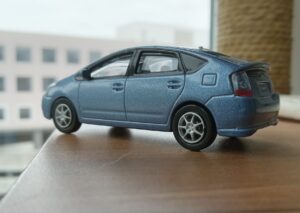
ーお楽しみにー
7th place: 1967 Cadillac Eldorado
When I hear “1967 Eldorado,” the first thing that comes to mind is
“Intelligent, sexy: Katharine Hepburn.”
(In the screwball comedies of the 1940s, she portrayed a character who was assertive and wild, a stark contrast to her intelligent first impression, creating a fascinating and mysterious balance.)
The 1967 Eldorado evokes that same sense of duality.
By the way,
the results of the top 10 designs are as follows.
10th place: BMW 507, 1956 ————————- (Silver + matching hardtop)
9th place: AM General Hummer H1, 1992 ———- (Military woodland camouflage)
8th place: MB 560 SEL, W126 sedan ————- (Dark navy and blue-gray two-tone)
7th place: Cadillac Eldorado, 1967 (Metallic blue with black leather top)
6th place: Toyota Prius, 2003 (2nd generation)————————–(Light aqua)
5th place: Honda S660, 2015 ——————————————– (White metallic)
4th place: Porsche 928, 1978 ————- (Light blue metallic with checkered interior)
3rd place: Citroën DS23, 1973 ———————— (Charcoal gray metallic)
2nd place: Lamborghini Countach LP400, 1974 —————— (Orange)
1st place: Austin-Healey 100/4 (BN/1), 1953 – (Ivory and dark blue two-tone)
(AUTO WORLD 1/64 1967 Cadillac El Dorado, Ice Blue w/ Black Leather Roof)
Reason for award and design commentary: A blend of sophistication and wildness
Cadillac’s top-of-the-line two-door car, which had existed since before the war, was a symbol of success, perfectly suited to its name (El Dorado), and was driven by millionaires and Hollywood movie stars as they commuted between their homes and movie studios.
This 1967 model marks the true rebirth of the El Dorado as the ultimate personal coupe. By adopting a front-wheel-drive (FF) layout—which offers advantages like more legroom in the front seats—it broke away from the rear-engine, rear-wheel-drive (FR) chassis shared with previous sedans, successfully achieving a higher level of exclusivity.
The Eldorado series was a huge success in the luxury car sector, riding the wave of the personal coupe boom that was already gaining momentum (with the Ford Mustang and Mercury Cougar at the entry level), establishing the image of the large coupe (hardtop?) and becoming a catalyst for the golden age of GM’s design studio led by Bill Mitchell and Chuck Jordan.
(GM’s FF luxury coupes of the same period included the Buick Riviera and Oldsmobile Toronado, both of which shared the same chassis and were famous for their excellent designs.
One of the masterpieces of GM’s golden age of design
The design of American cars in the 1960s marked a departure from the flashy and overly decorative designs symbolized by the tail fins of the 1950s, but in the early 1960s, there was a tendency to overemphasize minimalism and sophistication, resulting in designs that were a little too subdued. Amidst this situation, the Ford Mustang took the lead in starting a wave of nostalgia that could be called American neo-classic design.
In 1967, the Mercury Cougar followed suit, achieving great success, and it was in this context that the “Our Eldorado” made its grand debut.
GM’s response to this trend was the fusion of knife-blade fenders and voluminous upward-sloping body sides. (This is quite difficult to understand, but I will explain this topic in more detail later.)
During this period, GM Design Studio released numerous experimental production vehicles, laying the groundwork for future design trends. Specifically, they adopted highly avant-garde body side cross-sections, front, and rear masks on luxury coupes such as the 1966 Oldsmobile Toronado and the 1966 Buick Riviera, testing the market’s reaction.
Below,
we list some of the notable design elements of the Eldorado.
* Knife-blade fenders + Tornado body side cross-section
* Perfect coupe proportions (side view) that do not suggest FF drive
* Center crease line + knife-blade fenders = completion of GM design symbol (crease line extends to rear window)
* Front concealed lights and vertical slim taillights minimize decoration—->emphasizing the body lines even more
Through such creative ideas and their realization, a design that not only withstands scrutiny from every angle but is also bold and flawless, almost to the point of being the best view from every angle—the most quintessentially GM design (a moving three-dimensional sculpture)—has been completed!!
After the widespread adoption of neo-classic design, the 1970s (as seen in the Ford Thunderbird and Lincoln Continental Mark IV), instead of the knife-blade plus ‘L-shaped’ body cross-section, the knife-blade plus ‘U-shaped’ cross-section was adopted. This avoids emphasizing a floaty, high-waisted feel, instead capturing shifting light across a large surface to elegantly convey a sense of stability and direction.
My 1967 Eldorado
The first time I saw the actual car was about 25 years ago, parked in a lot near a counselor’s office in Burbank—a dilapidated metallic green Eldorado.
Here too,
like with the BMW 507, I recall feeling a bit disappointed.
* The peeling paint was one thing,
* But the size was so much smaller than I expected?
* Yet it still looked sharp and cool!
* The rear fenders were as sharp as a real knife,
and touching them felt like they could cut your hand.
That was the general impression.
The peeling paint, lack of gloss, and dark color meant it didn’t have the massive presence I had imagined. However, the rear fender top, which was as sharp as a knife, emitted an incredible aura, and I was moved when I first noticed the crease (fold line) on the center line of the rear window.
Through observing and analyzing actual vehicles, models, magazines, books, websites, and other materials, I discovered the following charms.
1. The intellectual sophistication of the animal fenders
The bulges on the front and rear fenders of sports cars that were popular in the 1950s gradually faded away in Europe, giving way to angular and wedge-shaped vehicle designs. However, for some reason, in the United States, they transformed into knife-blade shapes on the front and rear fenders and continued to exist for decades.
Initially found on pony cars and muscle cars, and later on large sedans (perhaps because they emphasized the width of the vehicle), these knife-like creases on the fenders persisted, almost like a symbol of American neo-classical design.
Points to note:
Fenders of European sports cars from the 1950s
—-> Revived in America as knife-blade fenders
The fact that American consumers did not accept the rationalist angular wedge-shaped cars
is similar to how, in the world of residential architecture,
people rebelled against the inadequacy of modern design and insisted on decorative styles like ranch-style and Spanish revival. (Come to think of it, the interiors of 1970s American cars were like furniture decorated with Baroque-style ornaments…)
2. Every effort has been made to pursue a sleek beauty (akin to the Prairie style in architecture).
With the motto “long, wide, and low,”
the tire size, axle position, and tread width have been comprehensively packaged to achieve an indescribable intellectual beauty.
3. Beauty lies in the details
This model of the Eldorado was equipped with the longest rear quarter window in automotive history. Moreover, thanks to the engineers’ efforts, it could be opened and closed vertically via an unconventional hinge system!!
If they were going to make it opening and closing, they could have made it a bit larger,
“No, this size is more beautiful in terms of design, so please keep it this way,”
or something like that? (laughs)
4. The rear quarter fender that made press technicians cry
Sometimes, without the assistance of skilled technicians, wonderful designs cannot be born. When I actually touched it, it felt like my fingers might get cut off!!
After numerous trials and errors, they developed a new press machine to make it possible.
5. A satisfying plan view (view from above)
This is the true essence of American car design.
With an abundance of land, there are no restrictions on maximum width.
This is a view from above that pursues the designer’s ideal of freedom.
Specifically, the line that sweeps from the front end of the knife blade section to the rear fender suggests the presence of a voluminous peak on the side of the door.
———> When this car approaches, the “moving reflection” cast by the large upward-facing surface along the door side, brimming with volume, is truly beautiful.
Summary: Where did Katharine Hepburn go?
Don’t worry, I’ll wrap it up nicely at the end… (laughs)
To summarize,
‘Crisp’ linear intelligence × hidden wildness
= Intelligent yet sexy appeal
= Katharine Hepburn
It seems to be in good condition.
It’s not over yet,
Below, I will list cars with a neo-classic design similar to Catherine Hepburn’s?
My favorite neo-classic design cars.
My favorite neo-classic design cars
Other outstanding classic cars in the same category.
“The fusion of American neo-classic and coupe style”
* First-generation Mercury Cougar, 1967 model (Green metallic)
(Not just an elongated version of the 1964 Mustang, but with an excellent relationship between the body cross-section and the knife blade design—the older brother of the Kenmeri Skyline)
* Lincoln Continental MKV, 1978 model (Navy and white two-tone)
(Ford spent 10 years perfecting it from the 1967 Eldorado, resulting in a huge success!)
* Dodge Challenger, 1970 model (Orange)
(An example of the application of the knife blade to a muscle car, with the “curl” remaining at the edge of the hood)
* Mustang Mach 1, 1971 model (Two-tone yellow and black)
(Another representative muscle car with a lingering hint of the knife blade design)
There are quite a few of these in Japan as well.
* First-generation Daruma Celica (Metallic green)
(First-generation Camaro + Dodge Challenger x 0.75, the three-dimensionality around the rear fenders is tear-jerking)
* Kenmeri Skyline (Silver metallic)
(The youngest member of the Mercury Cougar family… I’d like to see the front mask with the retractable headlights)
There were so many elements to discuss that this ended up being quite long,
but that’s all for now.
Next time, we’ll move on to 6th place, which is a complete change from the previous ones,
the second-generation Toyota Prius.
ーLooking forward to itー
Translated with DeepL.com (free version)
これはCTAサンプルです。
内容を編集するか削除してください。

